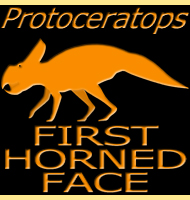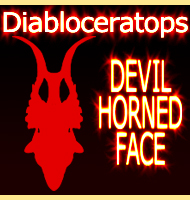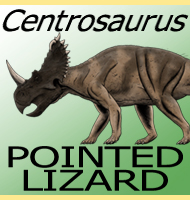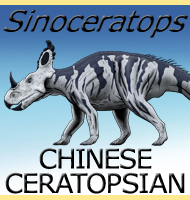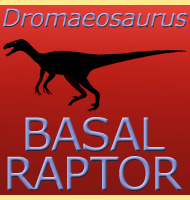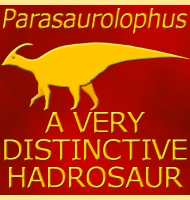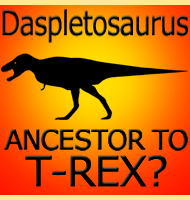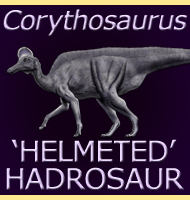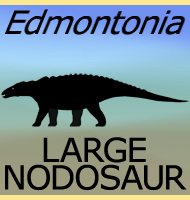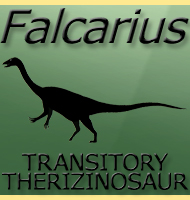


Pentaceratops
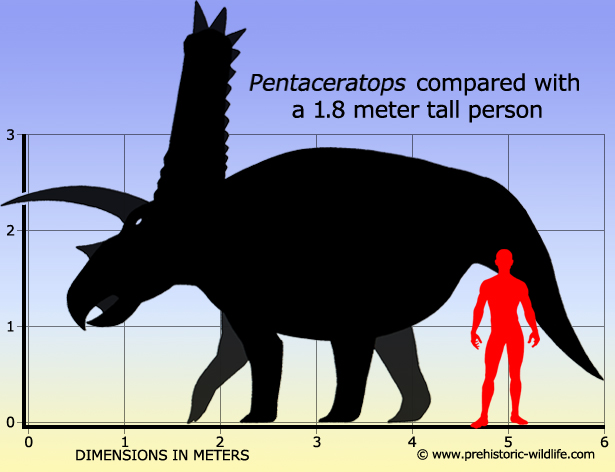
Name:
Pentaceratops
(Five horn face).
Phonetic: Pen-tah-seh-rah-tops.
Named By: Henry Fairfield Osborn - 1923.
Classification: Chordata, Reptilia, Dinosauria,
Ornithischia, Ceratopsia, Ceratopsidae, Chasmosaurinae.
Species: P. sternbergii (type).
Diet: Herbivore.
Size: Average seems to be around 6 meters long,
though several specimens have been estimated at around 6.5 to 7 meters
long.
Known locations: USA, New Mexico, Colorado.
Time period: Campanian of the Cretaceous.
Fossil representation: Many known specimens.
Pentaceratops
is one of the better known ceratopsian
dinosaurs, yet some people still
mistakingly think that it have five horns, based upon the literal
translation of its name. In actual fact the nasal and brow (over the
eye) horns make up number one to three, with horns four and five
actually being the sharply pointed cheek bones. Whereas ceratopsian
dinosaurs are noted for having large cheek bones (jugals) they are more
often rounded rather than pointed.
Pentaceratops
is a chasmosaurine ceratopsian (the group based upon the description of
Chasmosaurus)
and as such has a proportianately larger neck frill than
other ceratopsian groups. In fact Pentaceratops is
known for having one
of the largest neck frills of this group, and is part of the reason why
Pentaceratops is regarded as having the largest
skull for any land
vertebrate. This large frill size was possible due to the presence of
enlarged skull fenestra that made the frill resemble a frame rather
than a solid piece of bone. This also suggests that the frill served a
display rather than a defensive purpose as the gaps in the frill would
have been filled only by a thin growth of skin and tissue.
With
an upper size approaching seven meters in length, Pentaceratops
had few
predators to worry about when fully grown. However one potential
predator may have been the short snouted tyrannosaurid
Bistahieversor
which was also active in the same area and time as Pentaceratops.
Still, current fossil evidence suggests that Bistahieversor
was only
slightly longer than a fully grown Pentaceratops,
and it may have been
the young, old, and infirm individuals that may had reason to fear
attack from predators.
Some
sources continue to state that Pentaceratops could
grow up to nine
meters long, and while future fossil evidence may confirm this, the
nine meter size estimate is based upon Pentaceratops
fossil specimens
that have since been found to represent a new genus which has since
been named Titanoceratops.
Related and similar ceratopsian dinosaurs
include the aforementioned Chasmosaurus as well as
Anchiceratops.
Further reading
- A new genus and species of Ceratopsia from New Mexico, Pentaceratops
sternbergii - American Museum Novitates 93: 1-3 - Henry Fairfield
Osborn - 1923.
- The occurrence of Pentaceratops with a
description of its frill - T.
Rowe, E. H. Colbert & J. D. Nations - 1981 - In: Advances in
San Juan Basin Paleontology, University of New Mexico Press,
Alburquerque p. 29-48 - S. G. Lucas, J. K. Rigby & B. S. Kues
(eds.).
- A gigantic skull and skeleton of the horned dinosaur Pentaceratops
sternbergi from New Mexico - Journal of Paleontology 72 (5):
894–906 -
T. M. Lehman - 1998.
- Re-evaluation of Pentaceratops and Chasmosaurus
(Ornithischia:
Ceratopsidae) in the Upper Cretaceous of the Western Interior - S. G.
Lucas, R. M. Sullivan & A. P. Hunt - 2006 - In Late Cretaceous
Vertebrates from the Western Interior. New Mexico Museum of Natural
History and Science Bulletin 35:367-370 - S. G. Lucas and R. M.
Sullivan (eds).
- The horned dinosaurs Pentaceratops and Kosmoceratops from the upper
Campanian of Alberta and implications for dinosaur biogeography. -
Cretaceous Research, 51: 292-308. - N. Longrich - 2014.
----------------------------------------------------------------------------
Random favourites
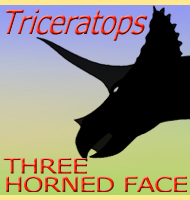 |
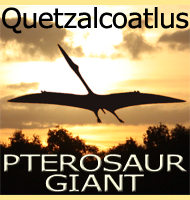 |
 |
